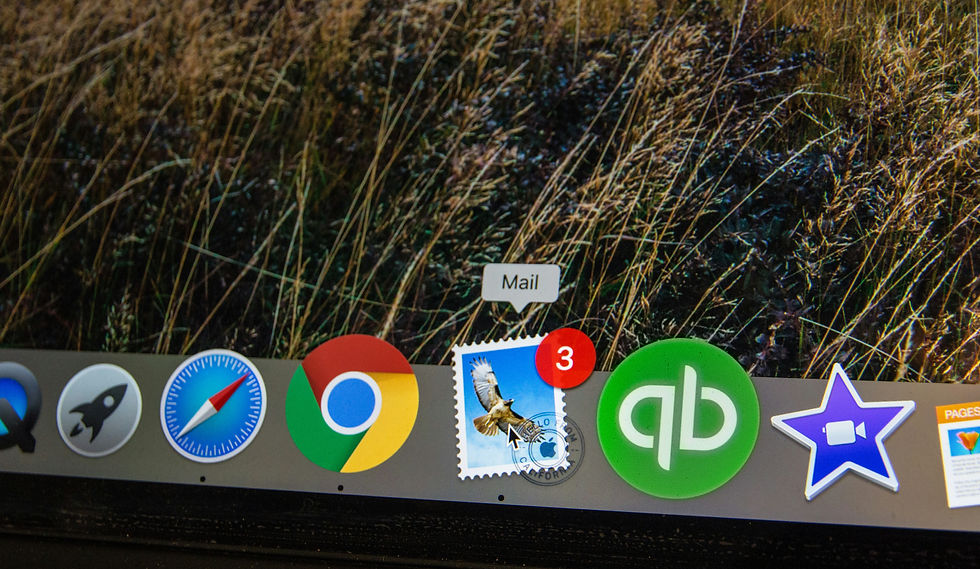Did you know there's more than one type of email? How you classify your communication when you're calendaring it can shape not only how your team works but how your audience engages with your content. In this post we'll look at three types of email to have in your toolkit -- promotional, transactional and informative -- and how they should speak to each other in your overall communication strategy.

Photo by Stephen Phillips - Hostreviews.co.uk on Unsplash
Overall when you are designing your email strategy you can and should work to a simple rule: Audience comes first. Your audience can and should dictate the type of communication you send out.
Promotion
A promotion, or sales, email is usually stratight forward. As a brand you either have a new product or service offering and want to put it in front of your audience (i.e. customer base). But a promotion email is not that simple. A promotion email can often times take twice as long as perhaps an informative, or even transactional, email to craft and polish. What are you communicating? How are you maintaining your brand voice? How strong is your sales push? Why does your audience want to engage with this product or service, in the first place?

Photo by Solen Feyissa on Unsplash
Staggering your promotional emails amongst your informative -- transactional nestle in here differently, as we'll explain later on -- allows for a natural cadence to develop with your audience. Frankly, whether you want to admit it or not your audience understands that as a subscriber of your brand they are accepting marketing. Whether that marketing is heavy handed or not, is up to your team. Never be afraid to communicate a new deal or saving to your audience, as long as you have them front of mind in the design. Where the train goes off the tracks majorly is when you start sticking in promotion emails for the sake of sales.
Transactional
Your transactional emails should be automated. They are the 'Thanks for Your Order' or 'Review' emails that will go out to your audience once they take an action. These emails are not the place to drop your focus. Including personality and brand design in these emails means that your audience will feel they are as natural to them as your regular 'campaign' sends (i.e promotion and informative). The only difference? A transactional email should have customer specific information like order details, shipping information, or product upsell referrals.

Photo by rupixen.com on Unsplash
When you are automating your transactional emails there's 3 systems to be sure you have before you start sending out any orders.
Thanks for Your Order : This should arrive immediately after the order and should include the price and details of the order. You can add some extra flare with a bit of a personal touch from your founder or brand ambassador, such as a 'note' or even digital signature.
Your Order has Shipped : Customers want to know where they are in the order fulfillment process. Syncing up your order processing system and your transactional messages so that you can provide 'real time' updates for your customers on when their orders will leave your premises -- and if they've purchased tracking, how they can track it! -- will go a long way to helping your brand build repeat custom.
Review : There's so much to be said for good, genuine UGC. Making sure that you have a step in your automated transactional messages to request (and receive!) reviews is a must-have. The more personal the ask, the better. And don't be scared if you receive some negative feedback -- always thank your customer and promise to take it on board for future improvements. Chances are you'll receive far better than you will worse, so put the message out there and reap the rewards.
Informative
Most brands LOVE informative emails. They are often times blog based, or even letters from the founder or brand ambassador facing. There's so much room for character and charisma in an informative style email that many brands feel they don't have with promotion or transactional style emails. There's something that needs saying here that you might not like to hear, but tough love and all that....your email newsletter is not your brand diary. There are not X thousand of subscribers because they all want to hear about your favorite walk or movie or etc. They are there because they like your brand and the products or services you sell. A good rule of thumb? Write down "We are XYZ company. We sell XYZ." And hang it over your desk. This will keep your content creators and copywriters honest and on point.

Photo by Aaron Burden on Unsplash
But be wary that a full calendar of chatty, personable informative style emails can do great things for your open rates but not necessarily your sales! Ultimately email is a sales channel first and a communication channel second. You can and will find a blend of voice and narrative to include product in your messaging but leaning too heavily on one side -- promo or informative -- will tip the scales and take twice as long to build up the rhythm in your sending calendar, again. It's usually a recommended 1-2-1 style -- with informative, promotion, then informative -- staggering the style of messaging but be sure to find the right cadence for your brand.
Summary: Finding a balance between promotional (sales), transactional (automated) and informative (personal) style emails in your strategy will help your brand find an audience that engages...and converts.
Get in Touch.
Have a question about how to build your email marketing strategy? Write us a note at liz@litirmarketing.com and we'll help get you started.
Comentarios